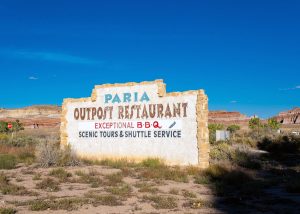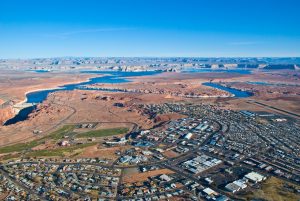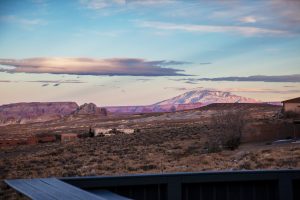First off: There is a meeting scheduled in Big Water, Utah at Town Hall on April 3, 2008 at 6:30 p.m. (Mountain Daylight Time – not AZ time) with the Utah Department of Natural Resources.
This is one of several meetings going on the week of March 31st to inform the public of the status of the Lake Powell Pipeline. Other meetings will be held in Apple Valley, Hurricane and Kanab. These meetings are not meant for public comment – that should be interesting…..
Background: The proposal on the table is to build a 66 inch pipeline from Lake Powell 120 miles to Sand Hollow Reservoir, above St. George, UT. This pipeline would deliver 70,000 acre feet of water annually to St. George. Kane County would receive 10,000 acre feet and Iron County 20,000 acre feet. One acre foot of water is 325,851 gallons and is roughly enough water for a family of four for one year. The Washington County Water Conservancy District has paid for the studies so far.
Wow!
The possible impacts of this pipeline are enormous not only on the growth of new homes and commercial developments in the areas receiving water, but there is a whole other side to this, agricultural. It takes much more water to irrigate one acre of land than one family. One possible benefit of this pipeline is that agricultural areas which in the future would be shut down to reappropriate the water for homes and commerce, would be left alone with their current water supply.
The water would only flow down to Saint George for so many miles. Eventually the water would have to go to a pump station that would pump it up hill so it could get to Sand Hollow. One of the ideas is to have it push turbines on the way down hill to Sand Hollow and generate enough electricity to off set the cost of the initial up hill pumping station. There are seven hydro-power stations proposed along the 120 mile route. Now enter the State of Utah.
A few days ago the State of Utah filed a petition with the Federal Energy Regulatory Commission asking the FERC to take over the Lake Powell Pipeline project, or at least take the lead in it. This action starts the environmental assessment process in motion and begins the public comment period.
So, now it begins. The Citizens for Dixie’s Future is firmly against the project. Their statement is that the pipeline does not support Utah Dixie’s values of ‘living within their means” From a recent St. George Spectrum Article “Citizens for Dixie’s Future believes our communities can become model desert cities of the future by using local water sources efficiently. Let’s avoid the suffering seen in today’s mortgage crisis. Let’s live within our means.”
Next up – the water district that serves Phoenix and Tucson have a Motion to Intervene as they feel it will threaten their water supply. Can you see the federal law suit looming????
According to Eric Mills, deputy director for the Utah Division of Water Resources “The big news is that we have submitted the preliminary application documents with the Federal Energy Regulatory Commission and are on our way to a 4 1/2 year process that will result in license permits for the Lake Powell Pipeline Project,” Millis said. “The next big step is the scoping process where we hold meetings where anyone interested in the project can attend and comment”
He then went on to say “Things shouldn’t change too much unless there’s controversy or something unexpected happens and slows things down.”
It would appear from the early input here that controversy is bound to happen.
Part 2 will be an overview of what happens at the Big Water Town Hall meeting on April 3rd… stay tuned!
Links
State Department of Water Resources
Washington County Water Conservancy District
Citizens For Dixie’s Future
Continue to Real Estate and the Lake Powell Pipeline Part 2
Real Estate and the Lake Powell Pipeline Part 3
Real Estate and the Lake Powell Pipeline Part 4
Interested in purchasing Lake Powell Property ~ Click here








6 thoughts on “Real Estate and the Lake Powell Pipeline Part 1”